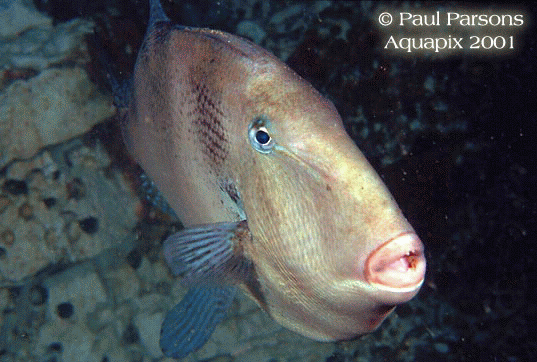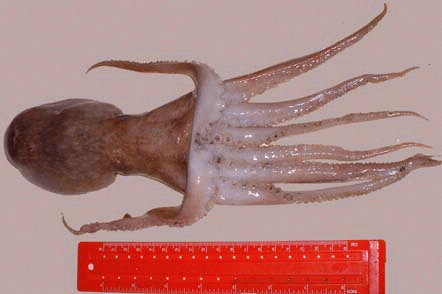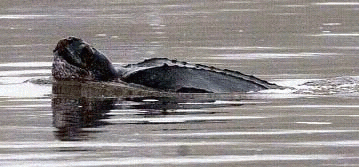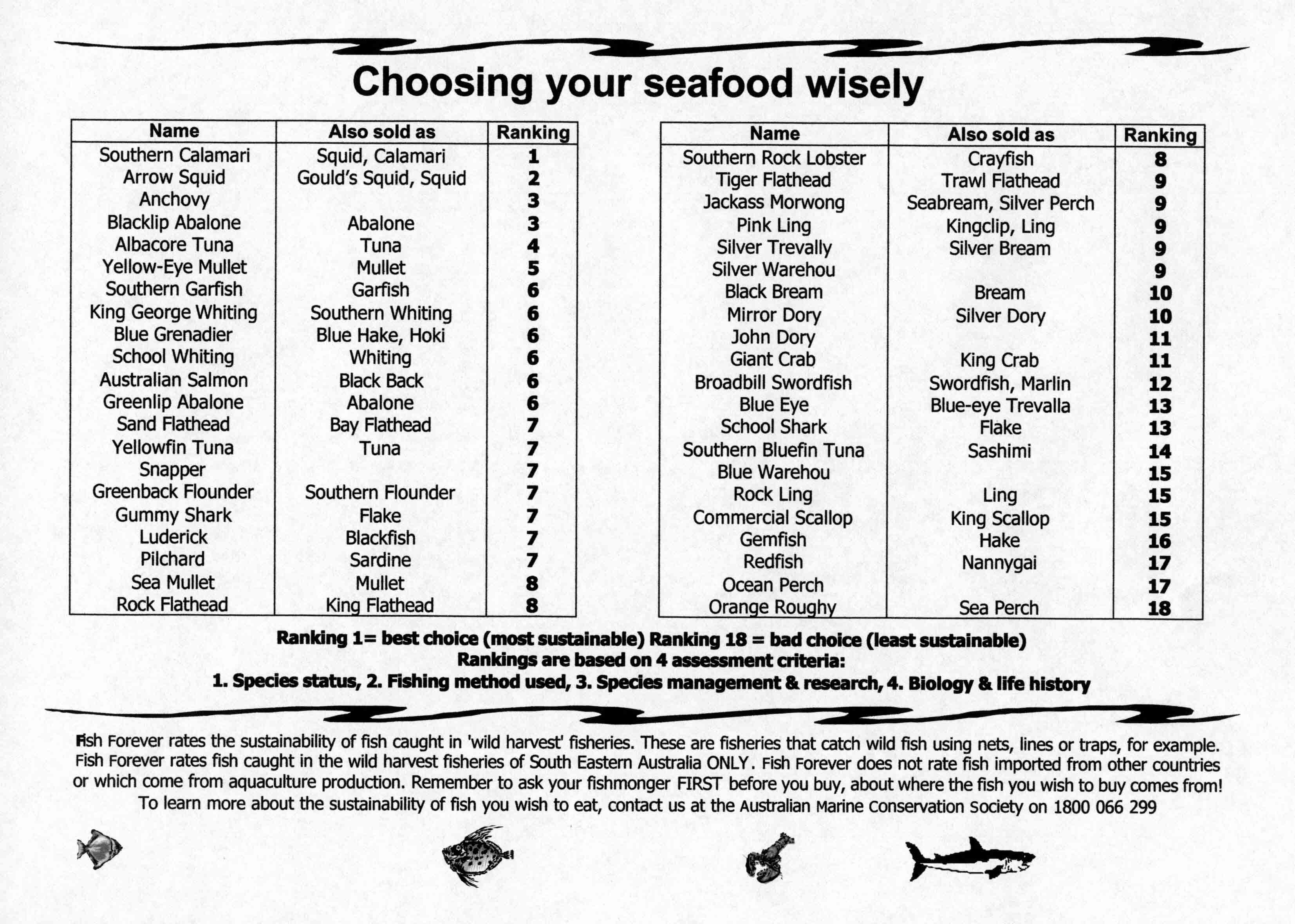
MLSSA
Newsletter
JANUARY 2002
No. 284
"Understanding, enjoying & caring for our oceans"
Next Meeting 16/1/02
The first meeting of the New Year will be held at the Conservation Centre, 120 Wakefield Street on Wednesday 16th January commencing at 7.30pm.
Our speaker will be Chris Hall who will be showing some more of his underwater slides. As usual this will be an excellent opportunity to select slides for the Photo Index.
Contents
MARINE WILDLIFE NEWS
Clean Up Australia Day - Sunday 3 March 2002
Choosing Your Seafood Wisely
New Discovery in the UK
Lobbying for more Marine Protected Areas in SA
2002 Calendar
Newsletter/Journal Articles
Articles are urgently needed for the 2002 Newsletters. Please try to generate some this year to avoid a heavy reliance on just a few people. Different points of view also make the Newsletter more interesting.
The 2001 Journal was made possible by the help of just 4 people with their articles. Please keep an eye out for any suitable items for the 2002 edition or create them yourself. Contact me first if you have an article in mind.
In all cases it reduces my workload if the article is proofed and any pictures included.
Philip Hall (Editor)
MARINE WILDLIFE NEWS
http://ourworld.compuserve.com/homepages/BMLSS/
Reports of marine wildlife from all around the British Isles.
26 November 2001
A very unusual report of a European Barracuda, Sphyraena sphyraena, was received from Cornwall where net fisherman David Kessell captured one six miles off the Lizard peninsula. The streamlined tropical fish has not been recorded in British seas before. This one weighed about 4.2 kg gutted (9 lb) and it was about 106 cm (nearly 4 ft) long. This fish has been photographed and verified by Dr Paul Gainey. Of the three species in the family Sphyraenidae found in the North East Atlantic and Mediterranean only Sphyraena sphyraena extends north to the Atlantic coast of the Iberian Peninsula and southern Bay of Biscay.
Report from Doug Herdson (National Marine Aquarium, Plymouth)
18 November 2001
Triggerfish, Balistes capriscus, in fine condition were discovered inhabiting part of the undersea chalk cliff face known as the Worthing Lumps, about 3 miles off the Sussex coast. About 15 adult fish were found, most of them inhabiting the rock crannies in the clear cold (12° C) water, but one fish ventured out into the open. Divers rarely have the opportunity to observe Triggerfish in the winter because of the inclement weather restricts the diving
opportunities.
Report by Paul Parsons

Triggerfish,
Balistes capriscus
Photo by:
Paul Parsons
17 November 2001
Two specimens of the Straight-nosed Pipefish, Nerophis ophidion, were discovered on the south Cornish shore of Hannafore Beach, Looe on the low spring tides. These pipefish are resident large (12 cm) pipefishes around the southern coast of Britain, and are probably rarely recorded on a few shores rather than being a rare species of this small elongated fish.
Report by Jon Makeham

A Curled Octopus was discovered by Helen Nott on Heacham Beach, Norfolk, In this photograph you can see the single row of suckers. The Common Octopus has a double row.
9 -14 November 2001
***A Leatherback Turtle, Dermochelys coriacia, nearly 1.5 metres across was spotted close to the south Alloa jetty 30 miles up the Firth of Forth, the major inlet on the east coast of central Scotland. A search was conducted for the turtle to rescue it in case it became trapped. However, in the vast expanse of the estuary the turtle could not be located easily and it was 14 November 2001 before it was discovered and photographed after an extensive and systematic search in small boats.

Report by the
Cetacean Research & Rescue Unit1 November 2001
There have been further reports of Short-snouted Seahorse, Hippocampus hippocampus, from around the Channel Islands. Fisherman Steve Ryall hauled them up in his nets together with Lumpsuckers and large Soles over 3 kg in weight. The Seahorses were returned alive. Lobster and crab fisherman Andy Egre reports catching two large Seahorses in his pots about a mile and a half off Rozel in 30 metres of water in an area of strong tides.
Report by Nick Jouault (Jersey)
31 October 2001
Fisherman Steve Long caught a Common Octopus, Octopus vulgaris, off the Cornish coast off Coverackit in deepish water at about 75 metres (40 fathoms). This warm water octopus is now only rarely discovered in the English Channel, although within just about living memory it was commoner. This species was identified by Paul Gainey, but hauling it up from the depths damaged the specimen which did not survive its ordeal.
Report by Stella Turk
29 October 2001
A Pistol Shrimp, Alpheus macrocheles, was discovered by fisherman Timmy Bailey in Falmouth Bay, Cornwall, and identified by marine biologist Paul Gainey. This is one of a few small shrimps that can produce a rather alarming cracking noise with their claws. It was bright orange in colour. Exactly how rare they are in British seas is unclear because they are small, up to 43 mm only, and are only rarely reported. (There are two other species Alpheus glaber and Alpheus ruber.) The Pistol Shrimp found a home at the Blue Reef Aquarium in Newquay.
Report by Stella Turk
***Steve Reynolds has had articles concerning Sea Turtles published in the June 1992 Newsletter (no. 179) and more recently in the September 2001 Newsletter (No. 281) to which readers may like to refer. An article on "Turtles, Tortoises and Terrapins" by Steve was published in the July 1999 Newsletter (No. 257). Back copies are held by him in the MLSSA Library or may be viewed on this Website.
Clean Up Australia Day - Sunday 3 March 2002
There are many good reasons for you to get involved in Clean Up Australia Day 2002.
Reducing the impact of rubbish on our environment and encouraging environmental awareness remains the focus for Clean Up’s activities. Unfortunately, the need for a Clean Up Day is as real as ever - Australians are the second highest producers of waste, per person, in the world!
The enthusiasm of local Clean Up committees is invaluable. Community involvement in the campaign contributes to a positive future for our natural environment and resources. Together we have been improving our environment since 1989.
Here are a few ways to get involved:
Your support of Clean Up Australia Day is very important. Please take part in 2002 by registering a site. Contact Lindy Swan at KESAB as soon as possible at 214 Grange Rd, Flinders Park SA, telephone 8234 7255. After registering you will receive a promotional pack. This package includes items to assist you in promoting your site as well as other helpful information.
Business Clean Up Day is also being organised by Clean Up Australia for the second year in 2002. This is an opportunity for companies and their employees to show support for a healthier community and a cleaner environment. We would like to encourage you to support this initiative if you know of any business owners who could be interested. Business Clean Up Day is on Tuesday 26 February.
For further information see the web site at www.cleanup.com.au or contact Clean Up Australia NSW on 02 9552 6177 or 1800 024 890.
Glenyss Carey is the Regional Australia Coordinator for Clean Up Australia Day. Her address is 18 Bridge Rd, Glebe NSW 2037, Ph: 02 9692 1223, Fax: 02 95524468. E-mail cleanup@cleanup.com.au
Steve Reynolds

Chart #2 The first was published in the November Newsletter No. 283
Two completely independent friends in the UK both sent me the same clipping from the Daily Telegraph (Saturday October 13th 2001) reporting an extraordinary new discovery off the British coast. Below is the exact text of the article. Alex Gaut
"Britain’s answer to the Great Barrier Reef has been discovered off the coast of Dorset by a scientist searching for seaweed.
The vast and colourful construction, the size of 50 football pitches, is 25 metres below the surface near the Isle of Purbeck.
It has existed undiscovered for thousands of years, prompting experts to believe that many other reefs may be lying off the British coast.
Unlike the Australian version, the South Coast reef is made not of coral but was created by a worm, the Ross Worm, that builds protective hollows out of mud and sea shells.
It has been described as a discovery of major importance because of its benefits to native marine wildlife. The reef provides a large-scale feeding ground for hundreds of species of fish, crab and sea snails.
Divers working for Dr Ken Collins, of the Southampton Oceanography Centre, who has studied the South Coast for 30 years, found the reef.
He said: "It’s quite amazing, rich and interesting – there’s a lot down there and we’ve only just discovered it. I came across the reef while I was researching the distribution pattern of a rare, pink seaweed called Maerl.
Divers reported to me where the Maerl was found so I could map it. But when they reached the edge of the seaweed’s habitat they stumbled across the reef.
I know of nothing on this scale in Britain. There is a reef in the Bristol Channel, which we know about because trawlers have pulled big chunks of it up.
Divers on the reef can only see a few feet in front of them because it is so dark, but we estimate the size of this reef to be about a square mile.
Its real importance is for the species that make use of it. There are hundreds of types of crab, also starfish, anemones, sea snails and numerous fish that are attracted by the abundance of food.
This reef is as important to British marine life as coral reefs are to tropical marine life."
It is thought to have taken hundreds of thousands of foot-long Ross Worms to build the reef."
By Nicola Woolcock.
Lobbying for more Marine Protected Areas in SA
In October we sent letters out to five State MPs lobbying for more Marine Protected Areas (MPAs) in SA. We sent the letters to Rob Kerin, the Primary Industries Minister (before he became Premier), Mike Rann, the Leader of the Opposition, Mike Elliott of the Australian Democrats in SA, Iain Evans, the Environment Minister, and John Hill, the Shadow Minister for the Environment. Each letter sought the MP’s assistance in having more MPAs declared along our coastline. We said that more MPAs are needed in order to sufficiently protect our marine flora and fauna. Our coastline is under increasing threats from pollution by industry and urban development, etc.. Areas are being damaged and marine life is suffering from habitat loss. We asked each MP to help us to preserve our marine life by supporting the declaration of more MPAs in our State. We soon received replies back from three out of the five MPs, but none so far from the Premier (Rob Kerin). Iain Evans’ Office Manager advised that our correspondence was receiving attention. Mike Elliott said that he shares our concerns. John Hill stated that Labor is committed to action regarding MPAs. He gave us (yet another) copy of Labor’s Directions Statement and said that more details will be made public during the (forthcoming/anticipated) election campaign. We soon received a detailed reply from Iain Evans. In it he said :-
"MPAs are areas set aside to conserve marine biodiversity, promote ecologically sustainable use, and provide for enjoyment of the natural environment. Australia’s governments are working together to set up a National Representative System of Marine Protected Areas through the entire marine and coastal regions of Australia. South Australia is contributing to this process in developing a system of Marine Protected Areas, which is a key commitment of the 1998 Marine and Estuarine Strategy. . . . The State Government is presently considering a number of issues regarding the establishment of MPAs in South Australia."
He went on to say "Whilst selection and establishment of MPAs needs to take into account ecological values, it must also consider the needs of all users of the marine environment. The identification of suitable areas for proclamation will be done through a fair and open public consultation process. Experience worldwide shows that MPAs are unlikely to be effective without strong stakeholder support. The process of selecting MPAs will not occur without consulting stakeholders at all stages of the process, from defining the MPA boundaries, to decisions about ongoing management. The approach proposed for South Australia is intended to build a partnership between stakeholders and Government agencies. This is more likely to achieve long term commitment and action that will sustain South Australia’s marine environment for the benefit of all."
He then said that "The Government will shortly release policy documents for public comment. These will address issues such as vision, goals and principles, displaced fishing effort, consultation and public participation, and the process for establishing MPAs." He concluded by saying "Thankyou for taking the time to write to me and for your interest in the development of the South Australian Representative System of Marine Protected Areas."
In mid-November Mike Rann, Leader of the Opposition, replied to our letter, saying that "Labor is committed to a "Living Coast" initiative dedicated to marine, coastal and estuarine management issues." Enclosed with his reply was a copy of a paper that he had presented to the National Biennial Coastal Management Conference in Perth in 1998. The paper is titled "The Living Coast – New directions for South Australia’s Coastal and Marine Environment".
Steve Reynolds
2002 Calendar
Could everyone make an effort to get monies collected for the 2002 Calendar to a Committee member as soon as possible please?
If you have any unsold copies and do not have any prospect of further sales then please return these Calendars too as other members may have unfilled orders.
Philip Hall

National Conference 2002
DIVING DEEPER
Plunge the Depths of Marine Education
13th and 14th April 2002 at
SARDI Aquatic Sciences Centre
2 Hamra Avenue, West Beach
Rodney Fox -
Keynote SpeakerBooking forms, a Provisional Program and details of the
Field Trip Options are available from:
Registration:
Anne Pomeroy, Conference Secretariat,Tele: (08) 8266 2779 or
e-mail: divingdeeper@annepomeroy.com
Tim Hoile, Marine Discovery Centre, Telephone: (08) 8356 8943 or e-mail: thoile@star.adl.catholic.edu.au
Investment
:MESA Members: $100 incl GST
Non Members: $140 incl GST